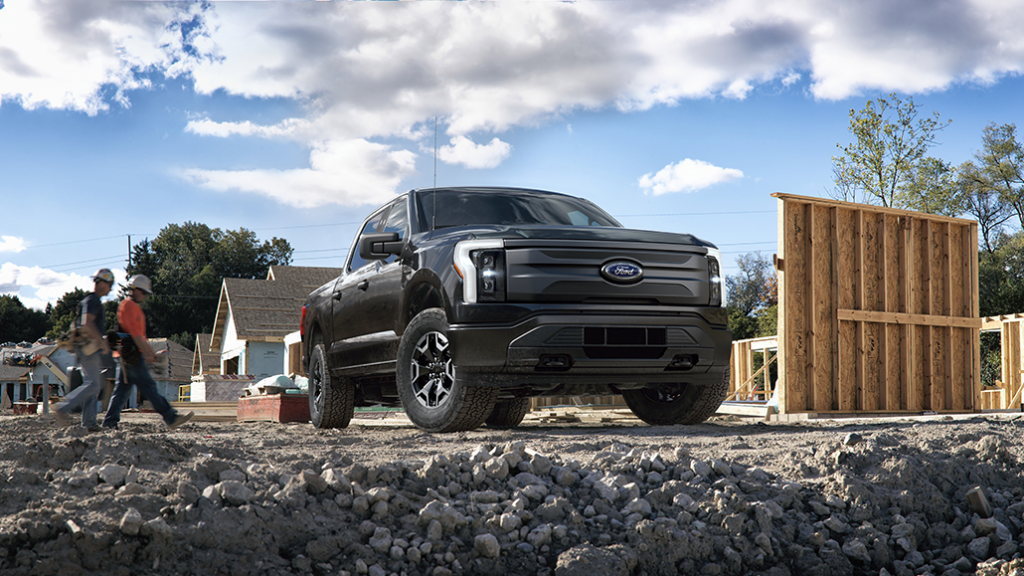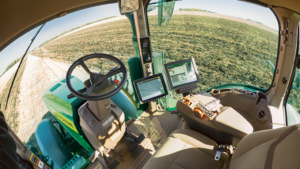Electric pickups
COMING TO A FARM NEAR YOU?

LAST YEAR, 1.6 MILLION new zero-emission vehicles (ZEVs) hit Canadian roadways, accounting for 5.2 per cent of all new motor vehicles registered. And between new federal government incentives and the release of new ZEV models, including light-duty pickup trucks and SUVs, our roads are about to look a lot different.
With goals to see ZEVs make up at least 20 per cent of all new passenger vehicles sold in Canada by 2026 and at least 60 per cent by 2030, the Government of Canada is on the fast track to see electric vehicles fill 100 per cent of our roadways by 2035 (all new vehicles must be zero-emission by 2035). Earlier this year, the federal government also released a new buyer incentive program, with $547.5 million in funding to help businesses, like farms, switch to medium-and heavy-duty zero-emission vehicles, including minivans, light-duty pickup trucks and SUVs. In addition, the federal government aims to have these medium-and heavy-duty vehicles make up 35 per cent of total sales of zero-emission vehicles by 2030 to help reduce Canada’s greenhouse gas emissions.
“When it comes to motivating ZEV buyers, government incentives are like the carrot,” explains Tim Burrows of the Electric Vehicle Society, a Canadian not-for-profit advocacy group for electric vehicles. “The ‘stick’ will be the zero-emission mandates.” And while the Government of Canada is rolling out buyer incentive programs and zero-emission mandates, only British Columbia, New Brunswick, Prince Edward Island, Newfoundland, and Quebec are offering provincial sales rebates for ZEVs. This explains why many manufacturers are prioritizing the supply of ZEVs to those provinces offering additional incentives.
Government targets and buyer incentive programs aside, what will the uptake of electric vehicles look like across rural areas, especially for farmers who prefer and depend on larger vehicles, like pickups, for day-to-day work?
“I believe there is a 100 per cent opportunity for electric trucks on farms,” says Burrows. “The question is time and how quickly the uptake will happen.”
COMING TO MARKET
The recent unveiling of the Ford F-150 Lightning is attracting a lot of attention as the first electric pickup truck available in Canada. According to the manufacturer, the new electric F-150 can serve as a de facto backup generator, generating 9.6 kilowatts of power from up to 11 power outlets throughout the vehicle, and its battery has the ability to power a standard home for several days.
Burrows says the F-150 Lightning is just the first major electric truck to market. Many manufacturers will be releasing pickups in the near future and offering customers new, attractive features, like power outlets that aren’t available on traditional vehicles.
“Because electric vehicles don’t have a motor, they have so much more space and freedom available to offer more creative features, and I think that will help with the attraction and transition to an electric pickup,” he says. The most attractive features for many consumers switching to an electric-powered vehicle today are reduced noise, lower maintenance and fuel, and reduced operating cost. And while they may not be selling points for die-hard pickup truck drivers today, Burrows is confident the new electric trucks coming to market will turn some heads.
Building on the Ford F-150 Lightning launch, GM is expected to release an electric version of their popular Chevrolet Silverado EV in late 2022. Additional ZEV pickups will include Toyota’s Tacoma EV and Rivian’s R1T. Lordstown Motors has announced an all-electric Endurance pickup, and Tesla’s Cybertruck is due to begin production in late 2022, with volume ramping up in 2023.
BEYOND THE ROADWAY
Electric vehicle technology has come a long way. Now the industry has the capability to manufacture powerful trucks with a range of new applications, and hopefully, those who are skeptical will be won over by the merits of the vehicles themselves,” says Burrows.
Electric vehicles, including electric-powered pickup trucks, are marketed as longer-lasting, offering reduced fuel costs and lower maintenance. And, as more trucks are being designed and manufactured, Burrows expects the average cost will eventually be the same or less than today’s gas- or diesel-powered trucks. “Some people won’t want to give up their traditional pickups, but change will happen over time,” he predicts.
New applications of electric-powered vehicles are also being explored and adopted in other industries, like aircraft, long-range transport trucks, mining, snowmobiles, and watercraft. Electric vehicles are already being considered for mining equipment in northern Ontario, offering an alternative to working underground with gas and diesel equipment where noise and ventilation are concerns.
“There are also interesting parallels between the adoption of electric vehicles on roadways and farms. While there could be potential objection to adopting electric-powered vehicles and farm equipment, once they are proven, they could be a game-changer,” says Burrows, noting an obvious power advantage for electric motors. “The maximum torque power happens at point zero when compared to a regular motor that requires RPMs to maximize power take off. Imagine what that could mean for operating farm equipment,” he says.
BIOFUELS STILL OFFER A SOLUTION
- To meet Canada’s 2030 emissions reduction target and reach net zero by 2050, the federal government has set ambitious goals for the adoption of Zero-Emission Vehicles (ZEVs) over the next decade.
- “While emission reduction goals are being set, there’s still a role for biofuels and the benefits they offer,” says Michael Buttenham, environment and sustainability lead for Grain Farmers of Ontario.
- Biofuels such as corn-based ethanol or soy-based biodiesel already offer an immediate solution to decarbonizing the transportation system while maintaining equity for consumers. The biofuels industry has seen these contributions recognized through the Province of Ontario’s E15 mandate and the Government of Canada’s inclusion of biofuels in the new Clean Fuel Regulations.
- The industry expects biofuels to remain a key pillar to the future of the low-carbon economy, even beyond 2030. Buttenham points to the continued expansion of the biofuels market within the transportation sector, such as renewable aviation and marine fuels, and the demand for industrial-based bio-products, like solvents, that will provide new value-added markets for Ontario grains and oilseeds. •










